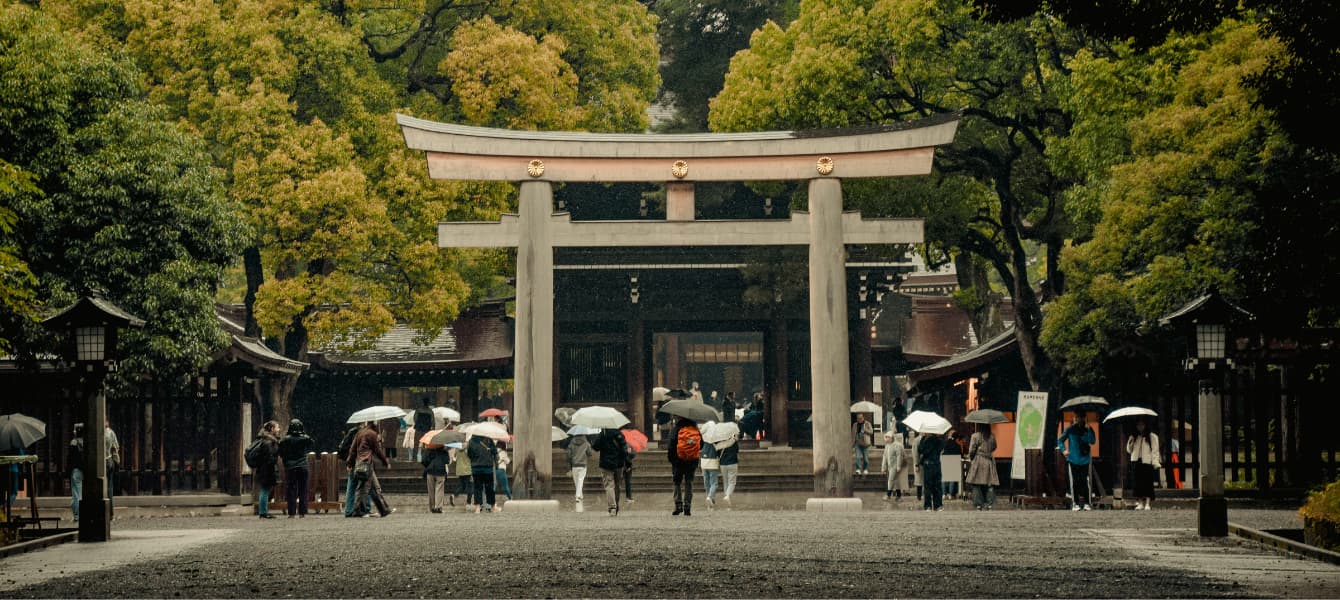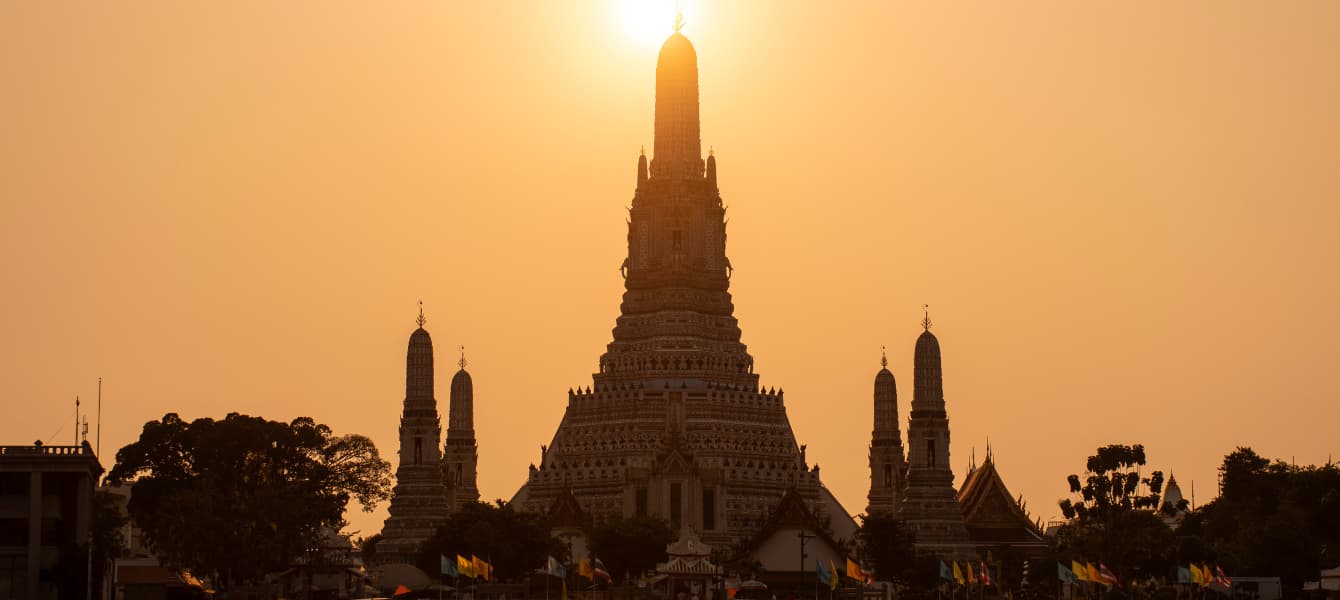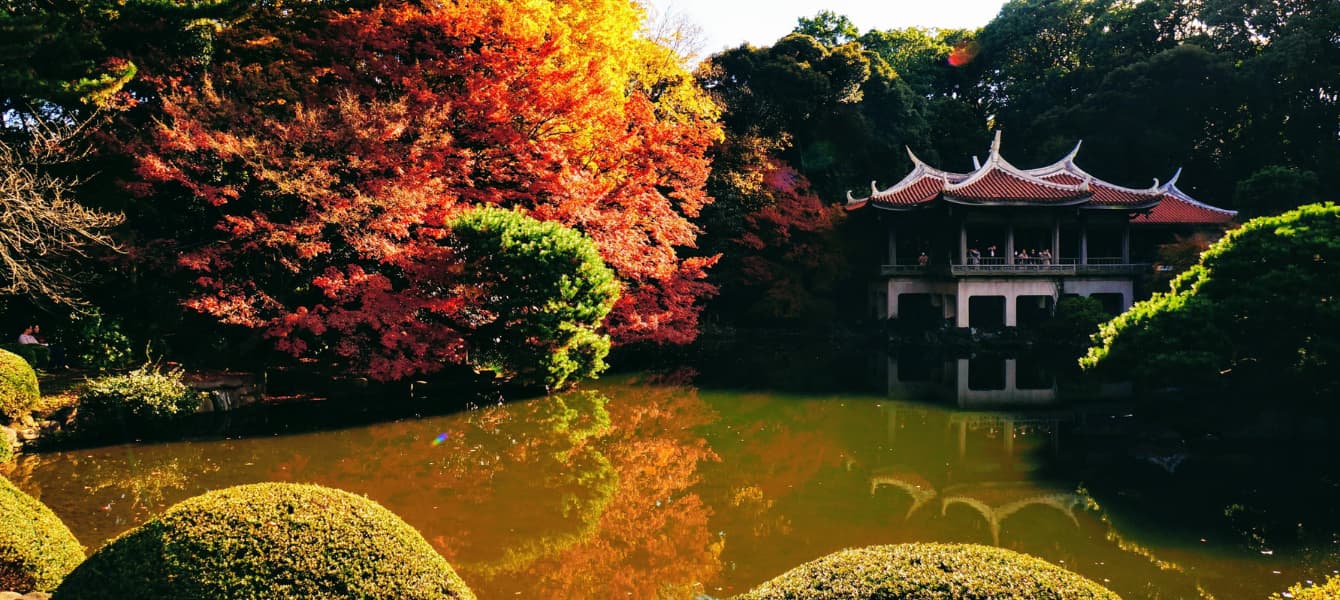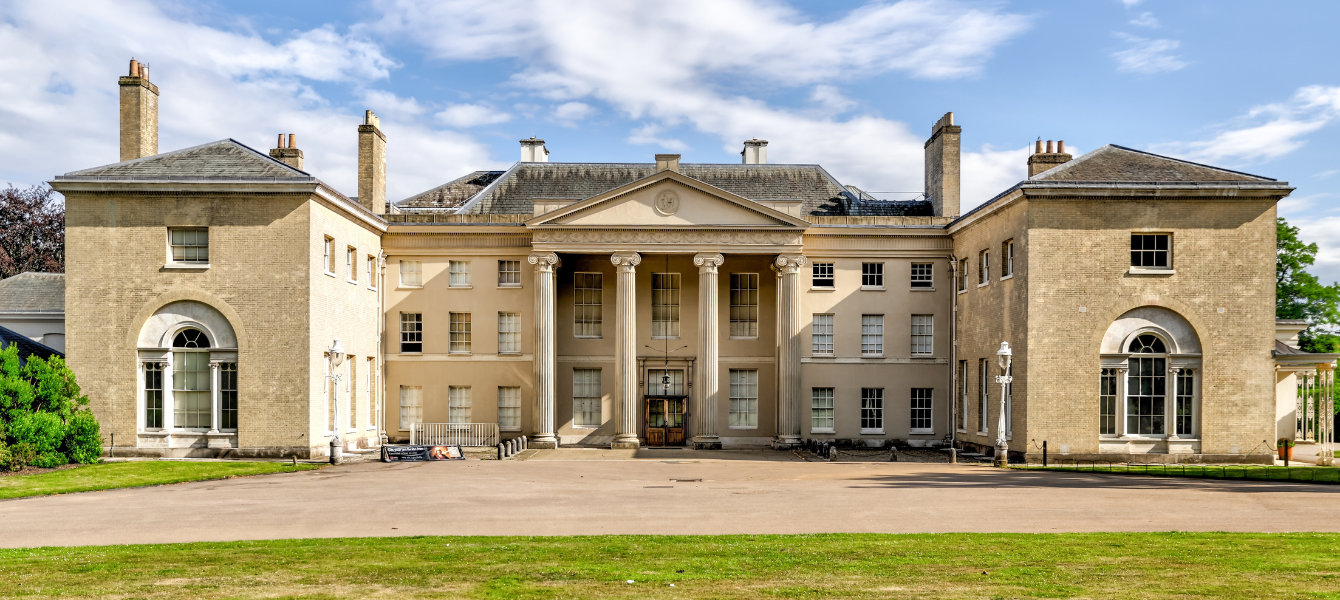Embarking on a journey to Tokyo’s cultural heart, one is drawn to the majestic allure of Meiji Shrine, nestled within the vibrant Shibuya district. Amidst the bustling streets and modernity of Japan’s capital city, this sacred sanctuary stands as a timeless testament to tradition and reverence. From its serene forested surroundings to its profound spiritual significance, Meiji Shrine brings visitors and locals to immerse themselves in its deep spiritual importance.
Meiji Shrine: In A Nutshell
📍Location: Meiji Shrine is located in Shibuya, Tokyo, Japan.
How to Get There:
🚝 By train: Take the JR Yamanote Line to Harajuku Station or the Tokyo Metro Chiyoda Line to Meiji-jingumae Station (Harajuku Station).
🚌 By bus: Various bus routes serve the area, with stops near the shrine.
🕒 Timings of Visit:
Open daily from sunrise to sunset.
The shrine buildings and grounds typically open around 5:00 AM and close around 6:00 PM, though exact times may vary slightly throughout the year.
🍃 When to Go:
Weekdays are generally less crowded than weekends.
Early mornings or late afternoons are ideal for a quieter experience.
Avoid major Japanese holidays or weekends if possible for a more serene visit.
🎟️ Ticket Costs:
Admission to Meiji Shrine is free.
However, there may be small fees for certain activities or areas within the shrine complex, such as museum exhibits or special events.
❗Important Advice:
Modest clothing is recommended that covers the shoulders and knees, especially if intending to participate in any rituals or ceremonies.
Photography is permitted in most areas but may be restricted in certain sacred spaces.
Visitors are encouraged to follow proper etiquette, including bowing respectfully at the entrance to the main shrine buildings.
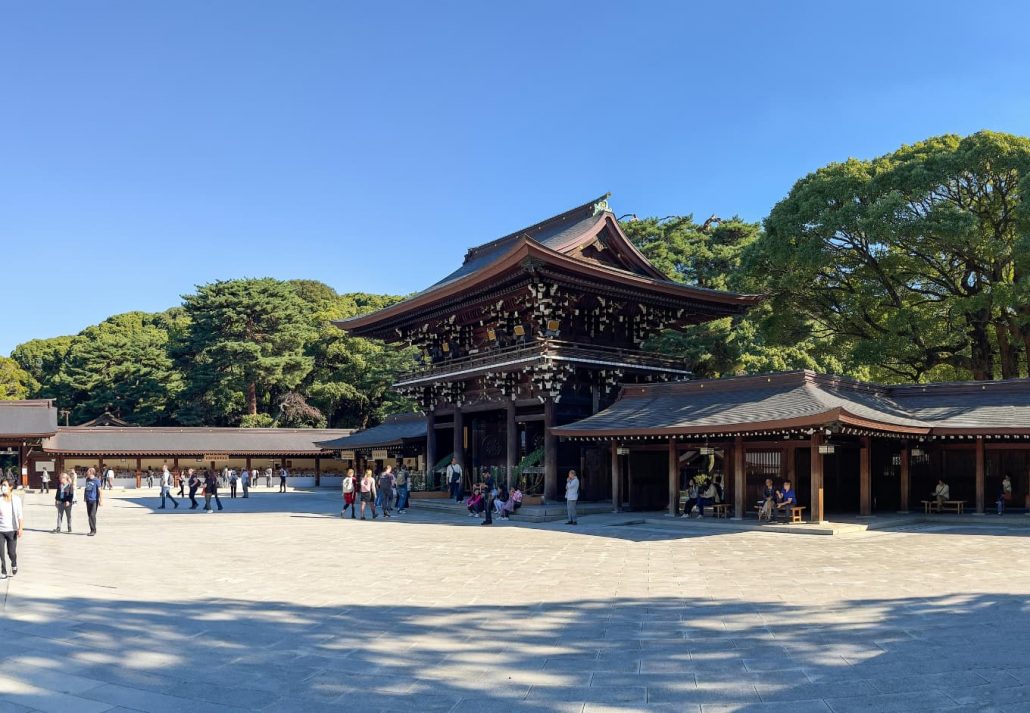
History of Meiji Shrine
In the heart of Tokyo’s vibrant Shibuya district lies a sanctuary steeped in history and spirituality, beckoning visitors to step away from the hustle and bustle of the city and into a realm of tranquility and reverence. Meiji Shrine, or Meiji Jingu in Japanese, stands as a symbol of Japan’s rich cultural heritage and a tribute to the country’s revered Emperor Meiji and Empress Shoken.
Meiji Shrine holds a significant place in Japan’s history, having been dedicated to Emperor Meiji and Empress Shoken in 1920, following their deaths. Emperor Meiji, whose reign from 1868 to 1912 marked the beginning of modern Japan, played a pivotal role in the country’s transformation from a feudal society to a modern nation-state.
Empress Shoken, renowned for her charitable works and promotion of education, remains revered for her contributions to Japanese society. The shrine was formally dedicated to commemorate their legacies and serve as a place of worship for the deified spirits of the imperial couple.
Why Is Meiji Shrine Famous
Meiji Shrine is famous for its majestic architecture, forest setting and profound spiritual significance. The Meiji Jingu shrine complex has huge grounds with a lot of greenery, towering trees and winding pathways, providing a peaceful escape from the bustling city.
Visitors mainly go to Meiji Shrine to pay their respects, make offerings at the main shrine building, and take part in traditional rituals and ceremonies, such as prayer ceremonies and seasonal festivals.
Exploring The Shrine Grounds
Upon entering the shrine grounds through the iconic tori gate, visitors are granted by the grandeur of the main shrine building, surrounded by towering Japanese cypress trees and Japanese culture. One can also visit the barrels of Sake at the Shrine grounds. The sake and wine barrels, or Kazaridaru, are offerings to the gods that are honored at Meiji Shrine. While the wine barrels are a reflection of Emperor Meiji’s attempts to introduce Western customs and technology into Japan, the sake barrels represent a traditional offering from Japan. A short walk through the forested pathways leads to the inner garden, where nature intertwines with the spiritual atmosphere of the shrine.
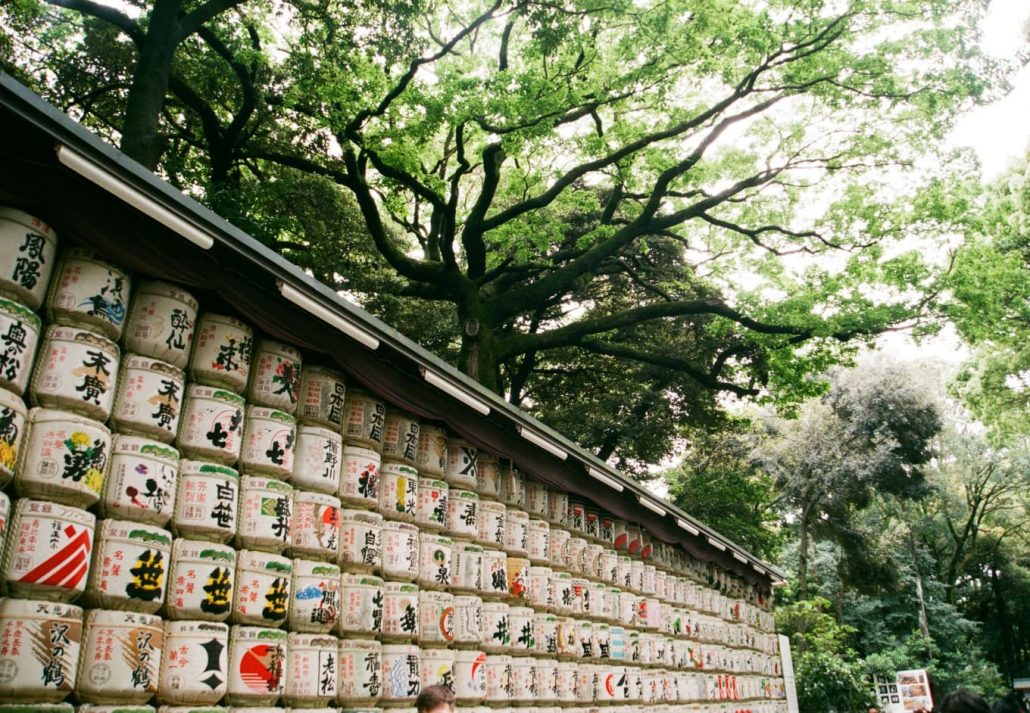
Along the way, you can explore the Meiji Jingu Museum, which houses artifacts and exhibits detailing the lives of Emperor Meiji and Empress Shoken, as well as the history of the shrine itself.
Things To Do Around Meiji Shrine
Very close to Meiji shrine is Yoyogi park, a sprawling green oasis where you can take a nice walk or even plan a picnic amidst nature. Nearby attractions include the Meiji Memorial Hall and Meiji Memorial Picture Gallery, which offer insights into the lives of Emperor Meiji and Empress Shoken through exhibitions and displays. Harajuku Station, located within walking distance, provides easy access to other popular destinations in Tokyo, such as Shibuya and Shinjuku.
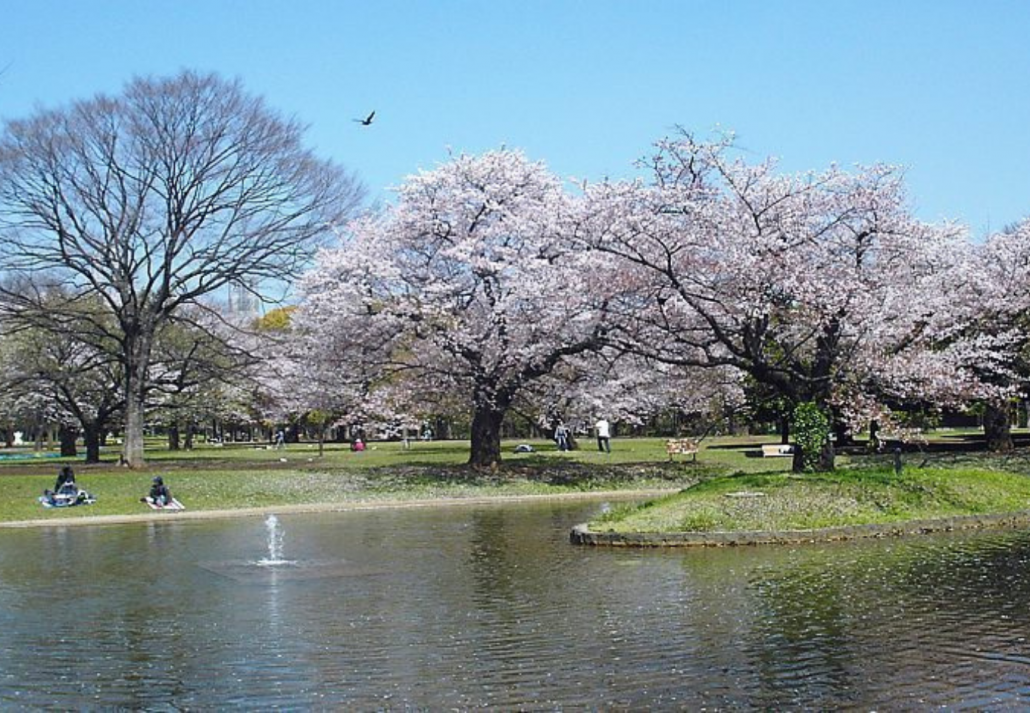
Stay Near Meiji Shrine
There are many stay options near Meiji Shrine that are luxury and affordable that you can pick from, according to your preferences. A very famous luxury option includes The Capitol Hotel Tokyu, that offers luxurious accommodations with stunning views of the surrounding cityscape and is very close to the Meiji Shrine. Another famous option is Hotel Chinzanso Tokyo that offers a luxurious stay with traditional Japanese touches.
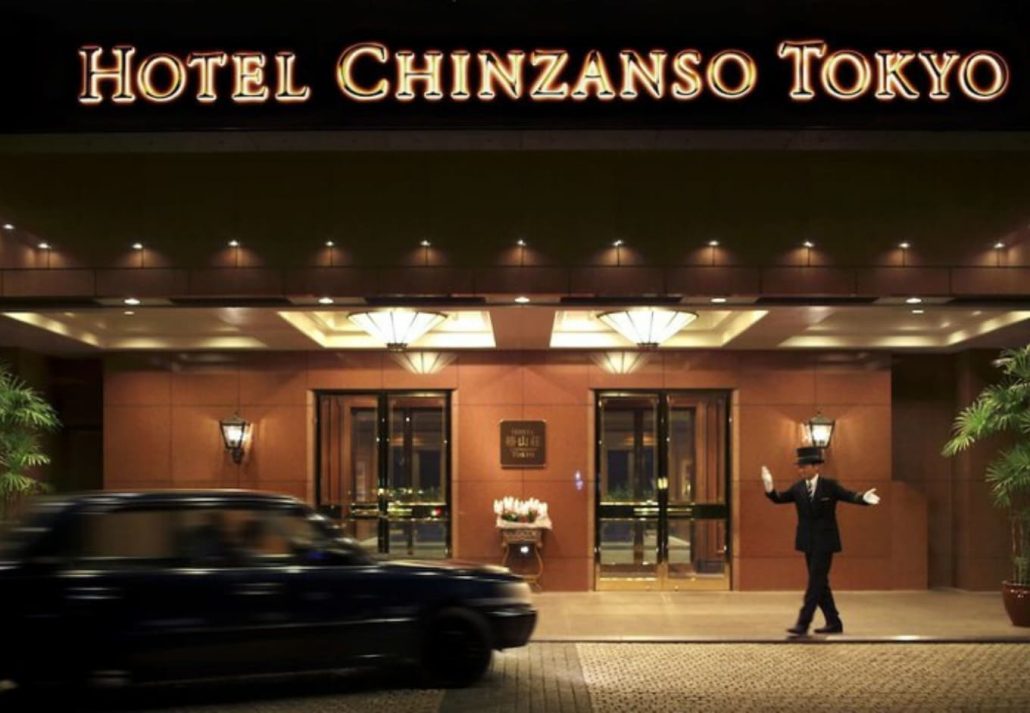
Affordable options that are close to the Meiji shrine include Sakura Hotel Jimbocho that is not only close To the Shrine complex but also offers budget friendly stay with a mix of private rooms and dormitory style stay. Another option is the Oak Hostel Cabin that is very close to the Meiji shrine and also offers a comfortable and clean stay.
Whether you seek peace amidst the bustling city or wish to explore Japan’s vibrant cultural tapestry, a visit to Meiji Shrine promises an unforgettable experience and should definitely be on your bucket list.
FAQs
Is there an admission fee to enter?
No, admission to Meiji Shrine is free. However, there may be small fees for special activities or areas within the shrine complex, like museum exhibits.
What should I wear when visiting?
Modest clothing that covers the shoulders and knees is recommended, especially if you plan to participate in any rituals or ceremonies.
Can I take photographs?
Yes, photography is permitted in most areas of Meiji Shrine, but may be restricted in certain sacred spaces. It’s important to observe signs and respect any restrictions on photography to preserve the sanctity of the shrine.
Are there any guided tours available at Meiji Shrine?
Yes, Meiji Shrine offers guided tours which provide in-depth information about its history, architecture, and the significance of the rituals performed there. These tours may need to be booked in advance, so check the official shrine website or contact the shrine office for details.
